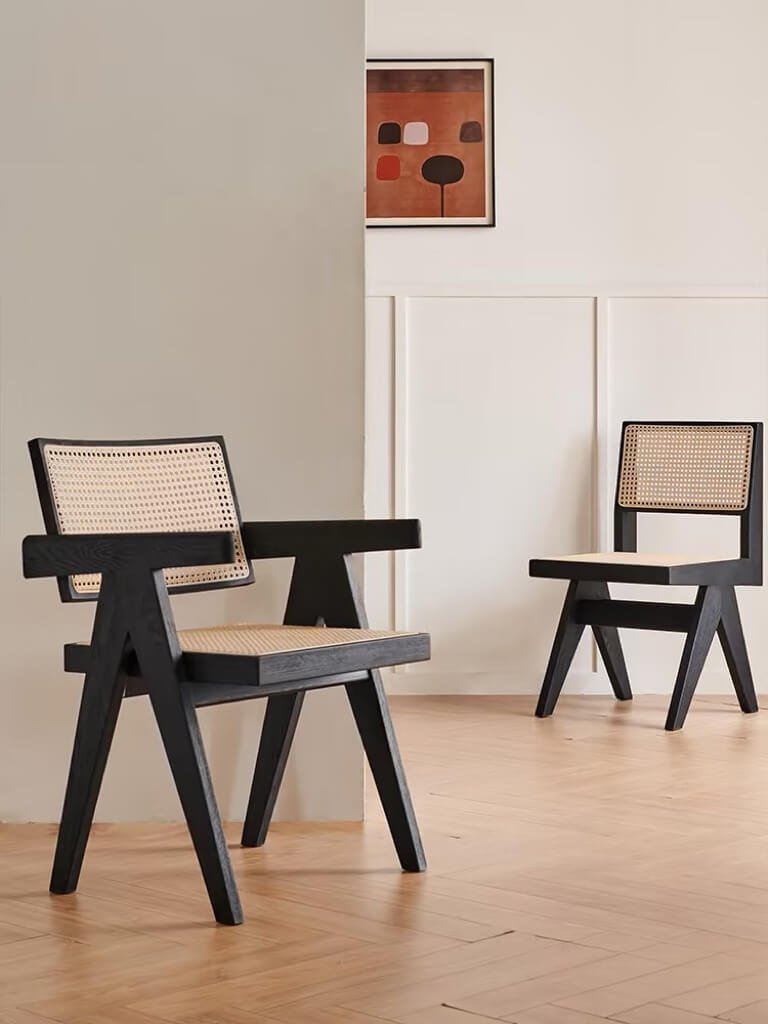Chandigarh Chair: The Legendary Tale of an Iconic Seat
News 2025年2月27日 73
In the world of furniture design, some chairs are more than just seats—they are works of art, historical witnesses, and even cultural symbols. The Chandigarh Chair is one such legendary piece.

I. Born in a City of Dreams
The story of the Chandigarh Chair begins in Chandigarh, a city of dreams in India. This city itself is a marvel. In the 1950s, shortly after India’s independence, there was a need for a modern administrative center to symbolize the nation’s rebirth. Prime Minister Jawaharlal Nehru invited Swiss-French architect Le Corbusier to design the city. Corbusier not only planned the urban layout but also personally designed the furniture, including the Chandigarh Chair.
Corbusier was a visionary artist who firmly believed in “form follows function,” yet he was not satisfied with mere utilitarianism. He wanted the Chandigarh Chair to be both practical for government offices and a testament to modernist aesthetics. Thus, he employed clean lines, geometric shapes, and sturdy materials, creating a chair that was both functional and artistically striking.

II. The Chair’s “Wandering” Years
However, the fate of the Chandigarh Chair was anything but smooth. For the first few decades, it was just an ordinary chair in government buildings, quietly supporting the weight of officials. Until the 1970s, when the Indian government decided to replace a batch of old furniture, these chairs were discarded as scrap. They were piled in warehouses, exposed to the elements, forgotten by all.
But fate has a way of turning on a dime. In the 1990s, a French designer named Pierre Jeanneret discovered these abandoned chairs. He was captivated by their design, considering them masterpieces of modern design. Thus, he began to collect these chairs, bringing them back to Europe to restore and sell.

III. From Scrap to Art: The Comeback
The return of the Chandigarh Chair caused a sensation in the design world. People were amazed by its design philosophy, which perfectly combined modernist functionality with artistic beauty. Its lines were clean and fluid, the materials durable, and each chair bore the marks of time, as if telling its own story.
Soon, the Chandigarh Chair became the darling of the design world. It was collected by major museums, purchased by celebrities, and even auctioned for astronomical prices. An ordinary chair had become a work of art simply because of its design and history.

IV. The Charm of the Chandigarh Chair
So, what is the allure of the Chandigarh Chair? First, its design is truly unique. Corbusier cleverly used geometric shapes to give the chair a sense of simplicity and strength. The backrest and armrests feature distinctive curves that are not only aesthetically pleasing but also provide comfortable support. Second, the materials are carefully chosen. The original Chandigarh Chairs were made from teak and leather, materials that are not only durable but also have a natural texture.
Finally, the charm of the Chandigarh Chair lies in its story. It has witnessed India’s independence and development, experienced abandonment and rediscovery, and ultimately become a legend in design history. Each Chandigarh Chair is like a container of time, holding memories of the past and the present.

V. The Modern Legacy of the Chandigarh Chair
Today, the Chandigarh Chair has become a classic in the design world. Many designers and brands are imitating its design, trying to capture its spirit. But the true Chandigarh Chair is irreplaceable. It is not just a chair; it is a symbol of an era, a legend about dreams, art, and history.
If you are fortunate enough to own a Chandigarh Chair, congratulations—you possess a genuine work of art. If you don’t have one yet, perhaps you should learn about its story and experience its charm. Because the Chandigarh Chair is more than just a chair; it is a legend, a tale of design and dreams.